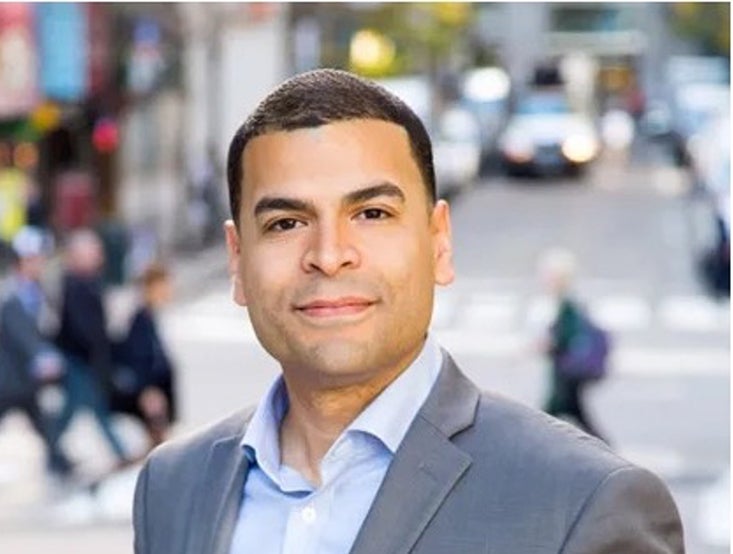With screens omnipresent in modern life, the digital out-of-home (DOOH) advertising channel continues to see growth.
One reason for this: We’ve modernized workflows such as conventional insertion order (IO)-based transactions and streamlined much of the manual process through the advent of advertising technology. Today, there are programmatic capabilities, real-time bidding (RTB) and streamlined automation of ad serving and delivery of campaigns.
As such, media owners and advertisers are adopting more innovative approaches to supply chain optimization that removes complexity, adds flexibility and efficiencies across time and resources and provides greater transparency in the end-to-end DOOH buying process.
Programmatic DOOH platforms
Perhaps the biggest enabler of DOOH growth has been the emergence of programmatic DOOH.
Programmatic DOOH uses machine learning and data to automate ad planning, buying, targeting, selling, delivering, and measuring across digital screens outside the home. It vastly improves the supply chain, allowing both advertisers and publishers to improve their bottom lines and see real-world outcomes.
For ad buyers, programmatic DOOH makes it easier to activate ad buys and placement from multiple media owners and screen networks through one unified platform. This enables buyers and sellers to programmatically buy, sell and deliver ad inventory in real time.
The utility of using one platform to plan, activate, deliver, optimize, measure and report campaign insights and metrics is unparalleled for ad buyers.
Unlike many traditional OOH models, programmatic DOOH can deliver against custom KPIs, in a similar way that performance-based campaigns are run on digital display. However, the big, bold, and impactful top-funnel opportunities still exist in the channel.
Programmatic DOOH adds flexibility to allow more granular control and customization for what a buyer is trying to achieve. This information helps advertisers and their agency partners better understand decision-making factors like floor price, best practices, number screens in venues nand creative performance.
Programmatic vs. traditional
Rather than targeting screens or locations like traditional DOOH, programmatic DOOH takes a more audience-centric and data-driven approach that is impression-based. Using programmatic DOOH, advertisers can drive efficiencies in their budget while cutting out areas that aren’t delivering meaningful results, ultimately lowering media wastage.
Programmatic also greatly enhances campaign measurement and reporting. Advertisers can measure real-time, in-flight campaign pacing and metrics, brand lift such as awareness, intent and consideration, and footfall traffic and in-store visitation.
It also greatly improves global digital ad buying. Previously, a global ad buy could take months of negotiations within the traditional direct model. Now, many programmatic DOOH platforms operate globally, enabling quick global ad activation based on data-driven and measurable information, with less manual processing and negotiation.
Programmatic also provides the flexibility to keep up with rapidly evolving global and economic changes.
Programmatic pricing models are flexible and give brands the power to increase or decrease ad spend, adjust campaign parameters, or even pause campaigns altogether in response to external changes, all in real-time. The latter was a huge differentiator during the pandemic when we saw the need for agile campaign delivery changes due to unforeseen changes to audience movement pattern.
Waterfall vs. header bidder technology
Another major shift that has innovated across the supply chain for DOOH advertising is the emergence of header bidder technology within the last year.
Compared to waterfall bidding, which checks each SSP for bids in a sequence, header bidding lets media owners integrate with multiple supply-side platforms (SSPs) simultaneously to offer ad inventory to multiple ad exchanges and networks. Advanced header bidding puts DOOH auctions on the same level as online advertising for display, mobile and video buys.
And header bidding is an advantage for both buyers and sellers.
Publishers have a first-price, parallelized, unified auction that maximizes their revenue without the need to hire their own development team. Meanwhile, ad buyers have more autonomy and control over how and where budgets are spent through greater levels of visibility and campaign reporting.
Examples of programmatic DOOH success
Organizations are using programmatic DOOH in creative, highly successful ways.
To create buzz for an upcoming movie premiere in Japan, Warner Bros. used the real-time nature of programmatic DOOH to integrate an engaging social component into the campaign, which projected local Tweets on DOOH billboards to create excitement and increase engagement.
The results? Over 1.7 million targeted impressions were delivered in only two days and the campaign was later replicated in additional U.S. markets.
In another programmatic DOOH campaign, real estate franchisor RE/MAX targeted young South African professionals. The company activated attention-grabbing billboard displays with larger-than-life 3D visuals to wow relevant audiences at scale.
The results? This was the world and industry’s first programmatically activated anamorphic video campaign. The award-winning campaign played when target audiences were in proximity of the screens and larger-than-life imagery appeared to be emerging from the billboard screens.
Room to grow
The significant advances in DOOH supply chain innovation opened the door for rapid growth in the past few years. But the bold predictions on the continued growth step from the reality that many DOOH channels remain underutilized.
Many ad buyers who already use the digital space to run video and other online ads are just now beginning to look at programmatic DOOH as an extension of their digital ad strategy. Growth will also come from ad buyers’ rapid expansion of campaigns on a global scale, since programmatic DOOH makes ad buying borderless and enables validation and vetting of media owners in one place.
Advertisers who are finding success are shifting their thinking. They’re moving from the common view of DOOH as a top-of-funnel awareness tactic or a standalone, out-of-the-box channel.
Instead, they’re recognizing programmatic DOOH as a multifunnel extension of omnichannel; a versatile channel that provides an intelligent, targetable, measurable, and impactful way to reach precise audiences outside the home.
All thanks to strong SSPs that allow advertisers to transact programmatically.
















